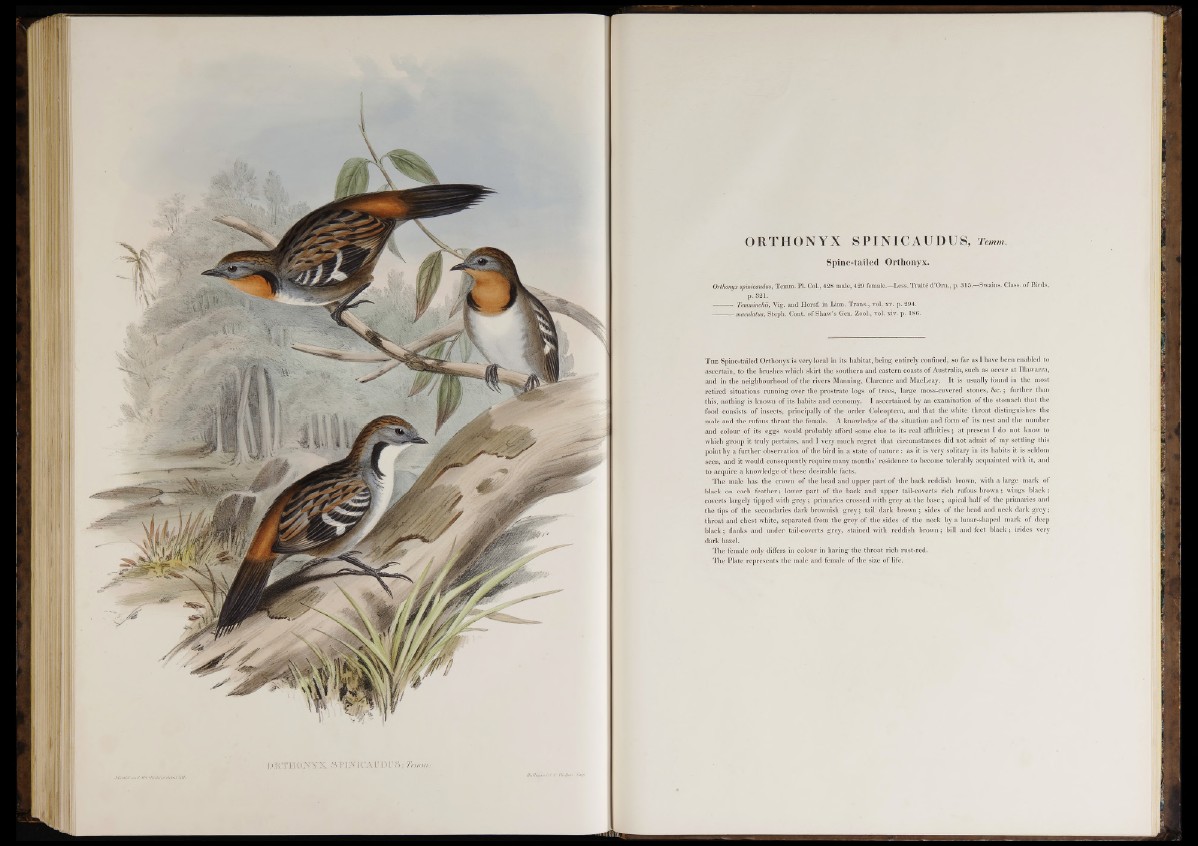
ORTHONYX SPINICAUDUS, Temm.
Spine-tailed Orthonyx.
Orthonyx spinicaudus, Temm. PI. Col., 428 male, 429 female.—Less. Traité d’Orn., p. 315.—Swains. Class, of Birds,
p. 321.
Temminckii, Vig. and Horsf. in Linn. Trans., vol. xv. p. 294.
— maculatus, Steph. Cont. of Shaw’s Gen. Zool., vol. xiv. p. 186.
T h e Spine-tailed Orthonyx is very local in its habitat, being entirely confined, so far as I have been enabled to
ascertain, to the brushes which skirt the southern and eastern coasts of Australia, such as occur at Illawarra,
and in the neighbourhood of the rivers Manning, Clarence and MacLeay. It is usually found in the most
retired situations running over the prostrate logs of trees, large moss-covered stones, &c.; further than
this, nothing is known of its habits and economy. I ascertained by an examination of the stomach that the
food consists of insects, principally of the order Coleóptera, and that the white throat distinguishes the
male and the rufous throat the female. A knowledge of the situation and form of its nest and the number
and colour of its eggs would probably afford some clue to its real affinities; at present I do not know to
which group it truly pertains, and I very much regret that circumstances did not admit of my settling this
point by a further observation of the bird in a state o f nature: as it is very solitary in its habits it is seldom
seen, and it would consequently require many months’ residence to become tolerably acquainted with it, and
to acquire a knowledge of these desirable facts.
The male has the crown of the head and upper part of the back reddish brown, with a large mark of
black on each feather; lower part o f the back and upper tail-coverts rich rufous brown; wings black;
coverts largely tipped with grey; primaries crossed with grey at the base ; apical half o f the primaries and
the tips of the secondaries dark brownish grey; tail dark brown ; sides of the head and neck dark grey;
throat and chest white, separated from the grey of the sides of the neck by a lunar-shaped mark of deep
black; flanks and under tail-coverts grey, stained with reddish brown; bill and feet black; iridcs very
dark hazel.
The female only differs in colour in having the throat rich rust-red.
The Plate represents the male and female of the size of life.